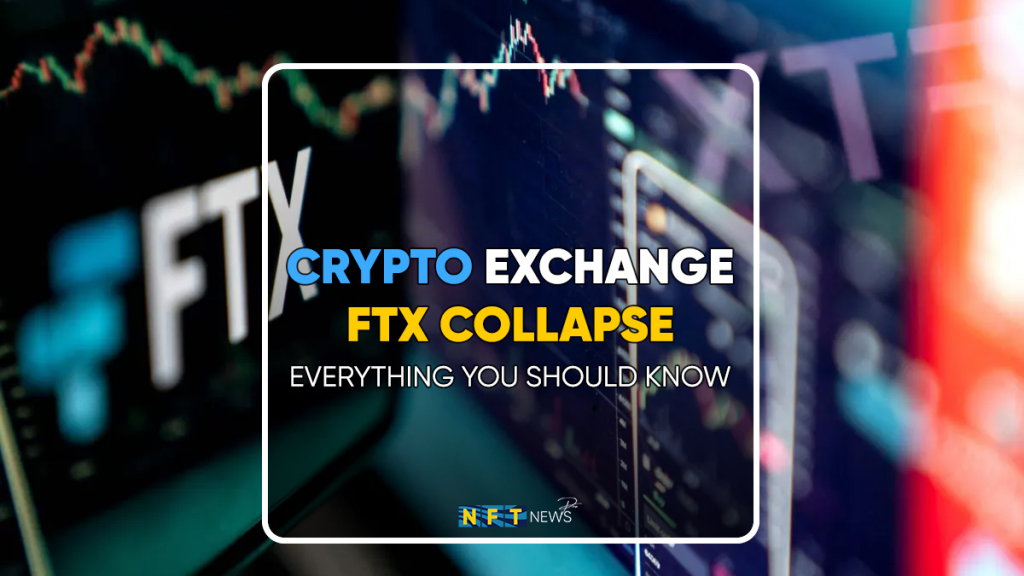
November is yet another memorable month for cryptocurrencies, but not in a way anyone would want to remember. Crypto exchange giant FTX faced its toughest challenge yet and, as seen in numerous cases, became another victim of a year that has sent crypto companies worth billions to zero.
While it is an effect of the crypto winter, the crypto giant’s collapse isn’t totally due to the crypto winter. If at all, it could be termed as self-inflicted and, to an extent, ironic. At the height of the crypto winter, crypto institutions such as Celsius, Three Arrows Capital, and major tokens such as terraUSD and Luna ran into troubles after mismanaging users’ funds.
In a space with little regulation, oversight, and insurance, the struggling crypto companies had few options. However, Sam Bankman-Fried, also called SBF, became the lender of last resort, offering to bail out many struggling crypto institutions. If he was already famous before the crypto winter, his many endeavors this year made him more popular.
Months down the line, now he needs a bailout himself. FTX, the company he co-founded and, up to some days ago, the fourth largest crypto exchange in the world, became a victim. And if there is one thing about crypto, it is that no one is immune to a rapid and unexpected collapse; Luna taught that lesson to everyone.
What is FTX?
FTX, before its collapse, was one of the largest cryptocurrency exchanges in the world. Sam BankFried-Man and Gary Wang founded the Bahamas-based company in May 2019. At its peak in November 2021, the crypto exchange had over a million users and was ranked third-largest by volume.
Unlike stock exchanges, FTX, as a crypto exchange, allowed users to buy and trade in cryptocurrencies. Its wide range of features, including derivatives, options, and leveraged tokens, made the company popular. This is in addition to the exchange supporting over 300 cryptocurrencies, all of which made it a good option for amateurs and professional traders.
Earlier this year, the company raised $400 million in a series C funding round to hit a valuation of $32 billion.
What led to FTX’s collapse?
A CoinDesk report on November 2 pointed at the balance sheets of Alameda Research, SBF’s second company. The report revealed, amongst other things, that the balance sheets of Alameda are full of FTX tokens called FTT. According to the report, the company had $14.6 billion in assets against $8 billion in liabilities, most of which were in FTT.
While that wouldn’t necessarily be an issue since FTX and Alameda operate in different sectors, the problem was in the risk it posed. It meant that Alameda’s balance sheets consisted largely of a token from a sister company instead of fiat or other crypto tokens to reduce risk.
A possible implication of that is a likelihood of shared risk and collapse. In the event that FTX collapses and its token loses its worth, Alameda would be affected too. That was not good news in a market that hasn’t recovered from the Terra-Luna crash. However, the reactions didn’t come immediately.
Binance announces plans to sell FTX’s tokens

Changpeng Zhao, founder of the world’s largest crypto exchange Binance, in reaction to CoinDesk’s report, tweeted that Binance would be selling its FTT tokens. Binance, earlier in the year, had exited as an investor in Alameda, to which it received over $2.1 billion in BUSD and FTT.
To cushion the effect on the market, the CEO added that the tokens sale could take months. Not so long after, Alameda’s CEO, in a tweet, mentioned that her firm’s financial position was strong and offered to buy the tokens from whoever was selling. CZ inclusive.
However, that was insufficient to calm speculations about FTT, which translated into exchange volatility. In the midst of the volatility, Blockchain explorer Etherscan reported over a $500 million transfer from FTX to Binance.
As the speculations grew, the price of FTT dropped 14% within 24 hours, taking it to lows not seen since June 2022. To quell the speculations, Alameda’s CEO again tweeted that the firm had $10 billion not reflected in the balance sheets. At that point, however, the fears were already high.
FTX CEO reassures the public, says “FTX is fine”
On November 7, SBF took to Twitter to reassure its users it had enough assets to cover their holdings and downplay concerns about his companies. In a series of now-deleted tweets, he said that FTX had enough assets to cover their holdings should they decide to take their funds off the platform.
A day after, CZ announced that Binance is in talks to acquire the troubled FTX and its liquidity crunch”. However, that was short-lived, as CoinDesk on November 9 reported that Binance is backing out of the acquisition after looking at FTX’s balance sheets.
FTX goes bankrupt
Bad became worse for FTX as investors and users withdrew their holdings from the exchange. More than $6 billion was withdrawn from the exchange in under 72 hours, forcing the exchange to halt withdrawals.
This was followed by SBF’s resignation as CEO and a bankruptcy filing as the exchange revealed it lacked the necessary funds to balance its liabilities.
FTX, earlier in 2022, reached a valuation of $32 billion and cemented itself as a major crypto exchange. It had the backing of companies such as BlackRock and Sequoia Capital. Likewise, its founder and CEO, SBF, enjoyed a meteoric rise to billionairehood, with Forbes estimating his worth at $17 billion.
Within a week, the crypto exchange was bankrupt, and SBF’s fortune dropped to zero. FTX token FTT also tanked, losing nearly all of its worth. At the time of writing, the token is trading under $2, according to data from CoinMarketCap.
FTX users unable to withdraw their holdings
The sudden collapse of FTX brought up one of the problems associated with the crypto space. Due to its unregulated nature, users have little protection when companies go bankrupt or collapse.
The decentralized nature of crypto companies means there could be a lot of hidden activities not revealed to users. As a result, many companies have exploited this feature to mismanage users’ funds.
This lack of transparency was one of the major reasons behind Celsius and Three Arrows Capital’s troubles and Luna’s collapse. Even when third parties are charged with auditing the accounts of these companies, companies could still push a lot of information underground.
As seen in the Terra-Luna crash, many investors and users saw their assets reduced to zero. Based on the look of things, there would be no remedy for them or a way to get their money out of the exchange.
FTX’s collapse affects the larger the crypto ecosystem

While FTX battled to stay afloat, market sentiments hit other crypto exchanges regarding the safety of users’ holdings. Immediately, Binance CEO Changpeng Zhao announced that Binance would reveal its balance sheet in what he termed proof-of-reserve.
Through this proof-of-reserve, users and investors will get information on the balance sheets of crypto companies. A lot of other crypto exchanges made similar announcements.
If properly implemented, the proof-of-reserve would help increase the trust in the crypto ecosystem and also protect users from risks.
What does the collapse mean for NFTs?
NFTs weren’t left out of the chaos. The overall market downturn hit the digital assets market, too, with NFT holders rushing to sell their assets.
Popular Bored Ape Yacht Club (BAYC) saw a decline in its floor price due to the high number of Apecoin held on FTX. Asides from the loss of assets, the collapse could also dip the overall market deeper into a harsher crypto winter.
Before its collapse, FTX was one of the popular cryptocurrency exchanges users used to trade and also store their crypto tokens. With the look of things, it is expected that there will be a massive movement from storing assets in exchanges to hardware wallets. This is so as users seek more safety and security for their digital assets.
How long-lasting these effects would be last remains to be seen, but a crypto world that would emerge afterward would afterward be one that is more secure and transparent.
Source NFT NEWspro



